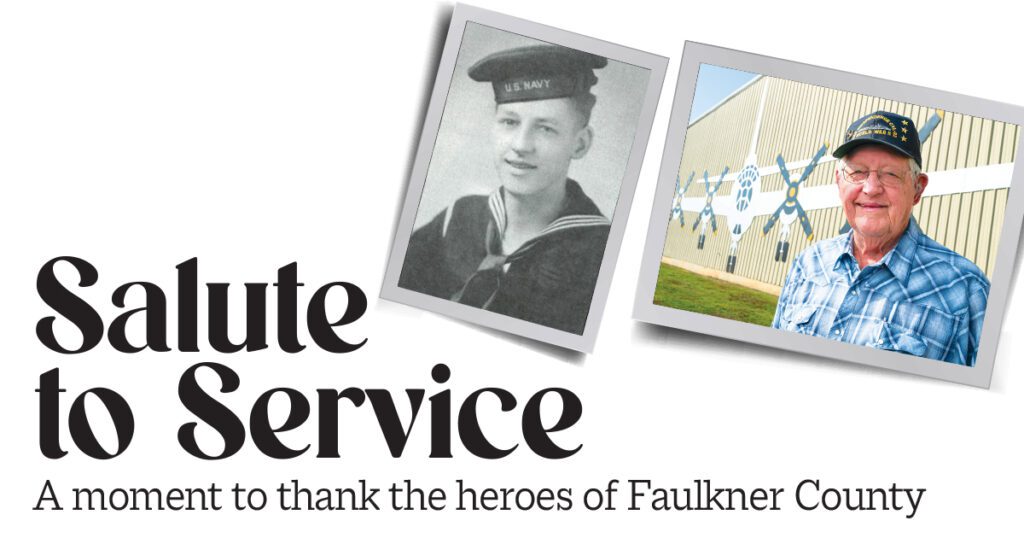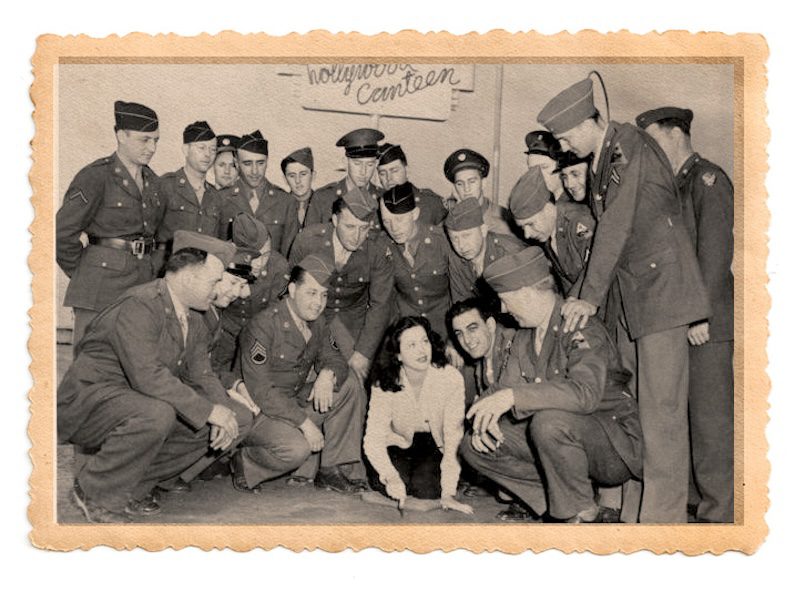30 Jun 2024 Salute to service
By Vivian Lawson Hogue
You might be wondering what World War II actress Hedy Lamarr is doing in these pages. She was one of many entertainers who toured the American military encampments to distract war-weary minds for a while. Her voluptuous beauty and star quality helped her meet the right people at the right time. One was her first husband, who was a munitions manufacturer. A later boyfriend, aviation notable Howard Hughes, recognized her brilliance and introduced her to his aeronautical team, with which she helped design faster aircraft. She often said, “The brains of people are more interesting than the looks.”

What did she do otherwise? She designed the technology that made Wi-Fi possible. She and a music composer also paired up to create a system that kept World War II enemies from blocking the guidance signals for our torpedoes. This system was eventually used during the Cuban missile crisis.
Now, we can look back and see events she might have affected, even right here at home. In 2012 as editor of the Faulkner County Historical Society’s journal, “Faulkner Facts and Fiddlings,” I felt it a good time to publish a special issue dedicated to all military veterans. With much help from Nancy Breeden Mitchell, we were able to compile a great collection of wartime stories and photos from veterans or their family members. Many from WWII to Vietnam benefited from Hedy Lamarr’s inventions and likely never knew it.
Here at home, Larry Yarbrough’s father served in WWI and survived wounds from mustard gas and four bullets from a machine gun. Two of Larry’s brothers served in WWII in the Aleutian Islands. Another brother served in the Navy during the Korean conflict. Larry himself joined the Navy after his 1961 high school graduation at the age of 17. His Vietnam-era experiences during that time were beyond our comprehension, and I could say he was not an Admiral, but was, indeed, admirable.
Homer Hoffman served in the Marine Corps before and during WWII for an unusually long period of pre-war 1939 to the war’s end in 1945. As you might guess, his nightmarish experiences were many, and he understandably chose not to discuss some. He had been transferred from his 2nd Defense Battalion to the 6th Defense Battalion, which would be assigned to Midway Island. His former 2nd Battalion went to Wake Island. When nearby Pearl Harbor was attacked, Wake Island and Homer’s former battalion were next. Most of those American soldiers were killed and the survivors captured.
The late Hubert Tucker’s several accounts were contributed by his daughter, Colleen Morton of Vilonia. His war stories were worthy of a John Wayne movie. Hubert served during WWII and experienced his first attack in Germany at the Battle of Toad Hill. His second was the Battle of the Bulge, December 1944. From his former battalion, he lost many friends. In the latter, he lost his closest friend, Sgt. Ervin Rogers. Hubert and Rogers had made an earlier mutual agreement that if anything happened to one of them, the other would write to his wife and tell her. Hubert carried out his part of the agreement. The war in Europe would be over in six months, and Japan surrendered the following September.

Larry Venable recalls being told that his grandparents were notified in person by Army officers that their 27-year-old son was killed in action on March 31, 1945. Nineteen days later, they received another notification visit informing them that another son, age 22, was killed at Iwo Jima. He recalls that through the years, his grandfather enjoyed going to the cemetery with hoe and rake to keep the graves attractive. As a 5-year-old, Larry recalled a memorial service for the two sons at Liberty School. “My grandmother moved from one flag-draped casket to the other, crying, praying and softly pounding each casket,” he said. The loss of one child was devastating; the loss of two was unbearable.
Johnnie Walter wanted to join the Navy, but after the paperwork was too much trouble, he decided to go home and wait to be drafted. Upon receiving his draft notice, he joined the Army. His first battle was the Battle of Geilenkirchen, Germany. Johnnie was wounded in the right leg and his feet were partially frost-bitten. In 2006, his left foot was amputated due to the long-time weather injury. Back home after lengthy hospital stays, Johnnie returned home and worked many years at Simon’s Bakery.
Curtis Breeden, Nancy Mitchell’s father, had planned to be a Benedictine Brother at Subiaco. His mother did not approve that plan, however, so he joined the Army, although he preferred the Navy. His most memorable experiences were being on his way to be a part of the invasion of Japan and learning that the atomic bombs were dropped. The peace treaty would be signed, and Curtis’ unit rerouted to Manila where he slept with his gun and knife bec sause many of the island Japanese did not know the war was over.
Tony Nahlen served in the Army Air Corps, as did his brothers Joe and Andrew. Drafted at age 19, it would be the first time he had ever left home. He served as a medical technician, so he was not assigned to a group. He went to where he was needed. One of his memories was of being in the Philippines and his group being rousted from their camp and hurried aboard a landing ship for reasons unknown. Later they learned the Japanese had taken reconnaissance photos of their encampment. “Just when the sun got right, the Japanese came out of the sun with suicide bombers,” Nahlen said. “They hit two ships and missed two.” The first landing ship that Tony was supposed to be on was hit. His own landing craft was towing boats to pick up soldiers who had jumped from the ship. “It was pretty bad. It was pretty bad,” he said.
There were others. H.P. Barham, a Conway native, spent four years in Japanese prison camps. Rules for these camps stated punishment for disobeying orders, showing antagonism, talking without permission or taking more food and blankets than allotted. A warning was given that any rule violated would be punishable by “immediate death.”
Doyne Montgomery of Vilonia was a top-notch Navy Skyraider pilot from 1956 to 1960 during the Cold War with Russia. Everyone has a bad day at work, though, and Doyne’s was about an engine that quit mid-flight during training. He made a bumpy but amazing and smoky landing on a highway, where a passing motorist who happened to be a physician stopped to help. Although Doyne’s body took bumps and bruises, his lip produced the most blood.
Marie Hiegel Pinter was a proud enlistee of the WAVES, an acronym for Women Accepted for Volunteer Emergency Service. She served in the Navy Weather Services while one brother, Joseph, was on a destroyer escort in the South Pacific and another brother, Arthur, was in a naval air station in Bermuda.
Al Hiegel was a radar operator who was in the South Pacific in the battle of Okinawa. In his summary of his extensive WWII service, he said, “No amount of adjectives can properly tell the story about an event that took over 50,000,000 lives and affected every continent and country on earth … We endured many hardships, but the lessons we learned stayed with us all our lives.”
Meanwhile, Hedy Lamarr and the entire U.S. population were doing what they did best. Hedy used brain power to improve aviation technology in hopes of helping win a war. Due to rationing, other women made bandages and invented new butter-free, eggless and sugarless recipes. They knitted and crocheted socks, caps and gloves. Vehicles had limited gasoline and did without new tires. Some 16-year-old boys “joined up” by lying about their ages. Some returned; some did not. Our country was united in patriotism, and we valued freedoms and ways of life as long as our Godly-blessed, 248-year-old country’s flag would proudly wave!
- And that’s what Christmas is really all about - December 2, 2025
- Giving thanks - November 4, 2025
- Giving up was not an option - September 30, 2025








